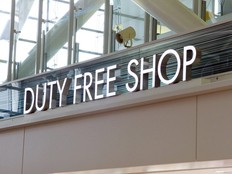Inflation ticks lower to 1.8% in December, thanks in part to GST tax break

Article content
OTTAWA — Canada’s annual inflation rate fell to 1.8 per cent in December, thanks in large part to the federal government’s temporary tax break.
Statistics Canada’s consumer price index report on Tuesday said restaurant food purchases, and alcohol bought from stores contributed the most to the deceleration.
The federal government introduced a temporary pause on taxes to those items in mid-December, along with children’s clothing and some toys, among others.
Without the tax break, Statistics Canada said the annual inflation rate would have risen to 2.3 per cent.
“Looking beyond the tax cut, it was not a great report, frankly, from the inflation standpoint,” BMO chief economist Doug Porter said.
“December is a tricky month because typically you get discounting around Boxing Day sales, and there might be some carryover from Black Friday sales.”
Growth in grocery prices also decelerated from the prior month, falling to 1.9 per cent year-over-year, from 2.6 per cent in November. Gas prices rose 3.5 per cent year-over-year.
Shelter cost inflation ticked down slightly in December to 4.5 per cent, though remain elevated, while rent prices rose at a slower pace year-over-year in December, at 7.1 per cent.
Attention now turns to the Bank of Canada, which is set to make an interest rate decision next week.
Some economists have called for another quarter-percentage point rate cut, following a half-point cut in December. Porter said weighing on the central bank’s decision will be the threat of 25 per cent tariffs from U.S. President Donald Trump.
Monday night, Trump mused hitting Canada with tariffs on Feb. 1.
The February date comes after Trump officials, speaking anonymously, suggested to reporters that the Republican president would only sign a memorandum telling federal agencies to study trade issues, including alleged unfair trade and currency practices by Canada, Mexico and China.
“It’s almost like we need two forecasts: one with tariffs and one without,” Porter said.
“In the mild scenario where Canada is affected by modest or no tariffs from the U.S., we were assuming three rate cuts through the rest of the year, taking the overnight rate down to 2.5 per cent.
“I think we have to revisit the entire forecast if we are indeed subject to 25 per cent tariffs. I think we would be looking at deeper cuts by the Bank of Canada.”
TD Economics also reiterated its expectation of a quarter-percentage point cut at “every other (rate) decision in 2025.”











Postmedia is committed to maintaining a lively but civil forum for discussion. Please keep comments relevant and respectful. Comments may take up to an hour to appear on the site. You will receive an email if there is a reply to your comment, an update to a thread you follow or if a user you follow comments. Visit our Community Guidelines for more information.